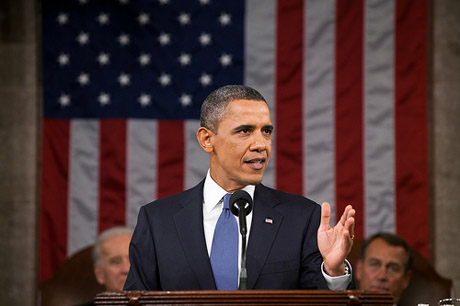Two eagerly awaited American events take place this week: the State of the Union address and the Super Bowl. The broadcast audience for Super Bowl XLVIII on Sunday will be significantly larger than the President’s State of the Union address on Tuesday. However, there should be no doubt that the state of the National Football League—concussion issues aside—is better than our Union’s.
The nation’s public education system should be the core thesis of the President’s SOTU address. I have perseverated in these weekly columns itis the number one issue of our time. And yet, football is more talked about—to our eventual peril.
Results from preschool to college predict our future success as a nation. The data continue to indicate that America and Silicon Valley are in a crisis of epic proportions. Many nations are leapfrogging us in math and science. It is equivalent, in my view, to the threat of the “Cuban Missile Crisis,” when the world was on the brink of nuclear war. As I read the educational tea leaves, armageddon is quickly approaching and we are doing little to thwart it.
Topics that need more public discourse include: Common Core, Preschool For All, new Smarter Balanced assessments, teacher tenure, last hired/first fired, performance pay, the role of charter schools, inclusive schools, STEM, arts and civic education. According to a new survey by the Friedman Foundation For Education Choice, classroom management and learning environment ranked as the top priority among parents choosing charters or private schools.
Even though President Obama has tried to orchestrate education reform from the national level with Secretary Arnie Duncan, it is the local school boards, superintendents, mayors, city council members and other community leaders that can make the difference here in Silicon Valley. In his column “It Takes A Generation,” NY Times columnist David Brooks wrote: “So when President Obama talks about expanding opportunity to in his State of the Union address on Tuesday, I’m hoping he’ll widen the debate. I’m hoping he’ll sketch out a state-by-stage developmental agenda to help poor children move from birth to the middle class.”
We are not utilizing our collective wisdom to ensure that each and every child is college and career ready after graduation. Collaboration and cooperation on how best to proceed with public funds must become the goal.
What occurred with Morgan Hill Unified’s failure to add two charter schools (Rocketship and Navigator) to its portfolio of schools is wrong, especially when sister districts show that collaboration is raising all boats for children in district’s like Gilroy, Hollister and Franklin-McKinley in San Jose.
The achievement gap—some call it the opportunity gap—is gravely serious. President Obama must touch on the following issues in his address: school readiness through quality early learning programs, parent involvement, parental training as the first teachers, attracting more top-tier college graduates to teaching, increased respect for teachers, and regional leadership academies for school and district leaders—akin to what exists with officer training in the military. He needs to cite the profound effect all of these things can have on the middle class.
The real threat to the American way of life is not from terrorists or foreign governments; it is from a weakened public education system. David Brooks wrote that over the next several years “we’ve got to spend a lot more time and money figuring out how to help people from poorer families chart a course through the teenage years.”
I would argue we know what to do already. It is whether we have the will and forthrightness to get it done.
Joseph Di Salvo is a member of the Santa Clara County Office of Education’s Board of Trustees. He is a San Jose native. His columns reflect his personal opinion and can be found weekly on San Jose Inside.

